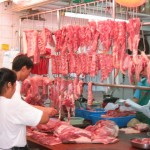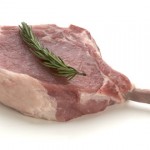[Infographic] The beef meat industry in China
The Beef meat industry in China: Why China needs US production
On 22 September 2016, Chinese officials announced that the embargo instituted after an outbreak of “mad cow disease” (also called bovine spongiform encephalopathy, BSE) in the United States in 2003 was partially lifted. Some American beef is making a comeback onto the plates in China, which now consumes 28% of the world’s meat supplies. But why did the Chinese authorities take such a decision after a 13-year ban?
Chinese meat consumption grows steadily every year, and beef meat is increasingly popular among Chinese people, especially in the middle class that keeps expanding. This trend reflects in Chinese beef meat importations that have increased by more than a factor of 186 between 2003 and 2016.
At the moment, beef meat consumption per capita is low in China compared to the United States, Brazil, Australia or Canada. However, overall consumption in China is expected to reach 5.34 billion kilograms in 2016. To put this figure in perspective, it is already more than the half of Brazil annual production, more than twice the Australian production, and more than four times the Canadian production. More alarming, Chinese people could consume nearly the half of the world’s beef by 2030 according to NGO WildAid. Importations from Brazil, Australia, and Canada may be insufficient to meet the Chinese demand.
Beyond a potential shortage due to supply issues, the domestic production of beef meat in China grows slowly. From 2014 to 2015, it only increased by 1% and will not be ready to complement the imports to meet Chinese people’s demand in the future. Thus, it is only fitting that China has resumed some American beef imports.
It remains to be seen how American beef meat will compete against Brazilian, Australian, Canada and British products in the Chinese market, and whether the ban will be entirely lifted by Chinese authorities in the future.


![[Infographic] The beef meat industry in China](../wp-content/uploads/2017/01/Screen-Shot-2017-01-04-at-12.05.57-PM.png)












